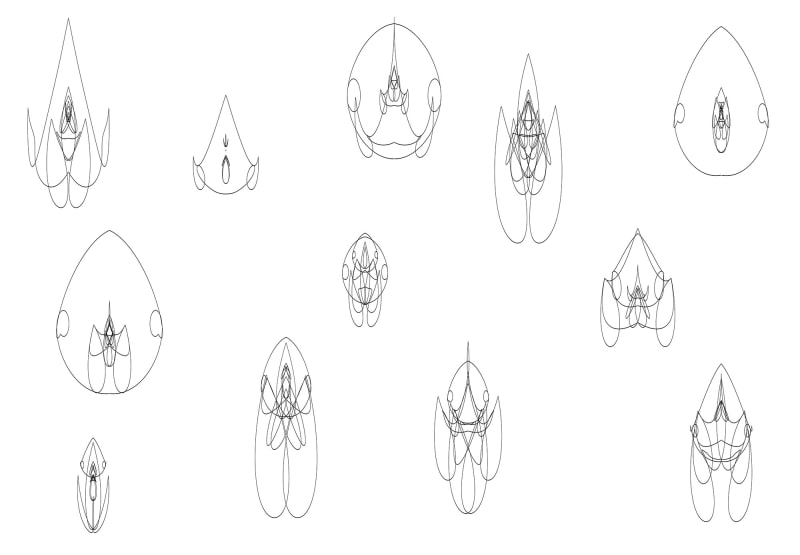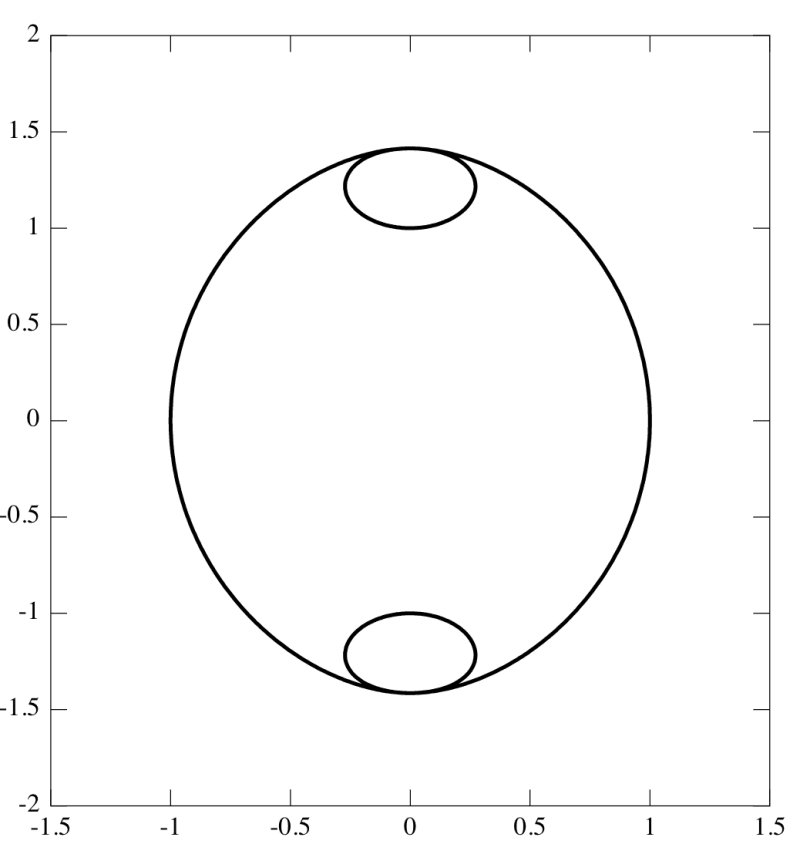The following short article will discuss the Insectoid Curve - a parametric curve inspired by the Scarabaeus and Cornoid. I created this back in 2016 for fun.
The curve itself is a weighted average of variations on both the Cornoid and the Scarabaeus. The equation is parametric, with as the parameter in a range from to .
Values and all range from to . In the below image these values were simply randomized:
Note each of the above plots is actually the result of randomly generated plots on top of one another and increasingly offset on the axis (slightly).
Interactive Version
Click the below plot - values through will be randomized.
The code here is a bit strange, something I speedcoded to quickly create responsive shapes/plots. I may revisit it some day, but for now it remains a bit of an esolang api.
Again, this is plots on top of one another. To render this plot with a single layer hold your shift key and click.
The Scarabaeus and Cornoid
The original equation for the Scarabaeus curve in polar coordinates is:
...and the Cornoid in parametric form:
Quick Background
The original impetus for the creation of the Insectoid Curve was to create a curve that had features similar to an insect - specifically a beetle. After combining the Cornoid and Scarabaeus the result you see here is the result.






Top comments (0)